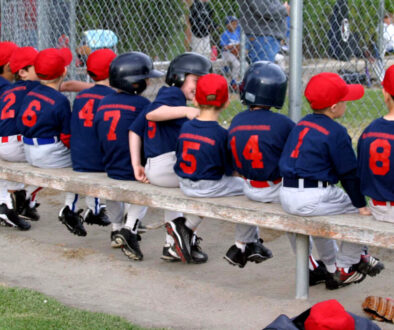Insuring Sports Facilities – Part 2
Best Practices and How to Buy Insurance for Sports Facilities
Now that you’ve read Part 1 and understand all the different ways insuring sports facilities can protect your business, it’s time to learn more about what type of policies to buy.
Deductibles and Maximum Payouts
As you know, all insurance policies typically require you to pay some initial costs upfront before the policy coverage kicks in. That initial cost is called a deductible. And, of course, each policy has a limit on the maximum amount that it will pay, both overall and for each individual claim.
As you can probably guess, policies with lower upfront deductibles and higher maximum payouts generally cost more.
The maximum payout should be a big factor in your choice of policy. After all, insurance is mostly to save us from those catastrophic, business-killing risks — we should be able to handle several hundred dollars upfront for a deductible.
Risk Management
Generally, you can pay less for insurance upfront if you follow best practices for avoiding risk as suggested by your insurer.
Ask potential insurers how much help and guidance you’ll be given in following those best practices (which usually include things like collecting participant waivers, enforcing age guidelines, locking doors, posting safety rules, and requiring background checks for coaches).
Your broker should be able to explain all of these best practices to you and answer any questions you have about them. Some brokers limit risk management consultations or charge for them.
Ideally, you would get as much free, unlimited consultations as possible as part of your policy. Using these risk management tactics can save you a lot of time and money if they help you avoid a catastrophic event. Your insurer should have a lot of data and experience to draw from to inform you about the risks you’re facing.
Compensation Schedules
Make sure that you’ll get paid for costs incurred as they occur and not on separate schedules or after the fact. This is especially important for liability insurance. Court and legal fees shoot up very quickly. However, it’s also important for accidental medical policies. Those expenses can also become astronomical.
Staff vs. Employees
Make sure your policies cover all of your staff, even if they’re contractors or unpaid interns or volunteers. Some policies only cover actions by official “employees.” That can severely limit your coverage if many of your sports-specific instructors aren’t official employees.
Insurer Ratings
A.M. Best rates insurance companies based on a multitude of factors, including their likelihood of being able to pay your claims. Don’t accept any rating under an A.
Exclusions
Always carefully read the list of exclusions in your policies to fully understand what will NOT be covered. Don’t skip the fine print. You’d be surprised by some of the exclusions that are added to policies that preclude some of the most important risks – such as those for specific types or injuries – even in policies that are supposed to be for sports events or academies.
Excess vs. Full
You may purchase an accidental medical coverage policy that only kicks in after the participant’s personal health insurance coverage has been exhausted. Buying this “excess” medical insurance can save your business some money. Then, you can use that money to buy a policy with a higher maximum payout.
Occurrence vs. Claims Made
Insurance policies either cover claims that are made during the coverage period (“claims made”) or any claim resulting from an event that occurred during the time the coverage period was purchased (“occurrence”).
For example, let’s say you have a “claims made” policy in effect for the calendar year of 2015. That policy would cover any claims that are made in 2015, whether they resulted from injuries or accidents that happened in past years or not.
If you had an “occurrence” policy for 2015, however, the policy would only cover claims resulting from accidents that occurred in 2015; if a claim arose from an injury or conflict that happened in 2014, for example, hopefully your occurrence policy from 2014 would cover the damages.
Occurrence insurance is typically more expensive than claims made insurance. Mainly, it can protect you long after you’ve personally left your business and stopped insuring it. For example, an athlete decides to pursue damages for injuries they sustained 10 years ago as a child. Ask your potential insurance agents the risks of these types of years-later claims.
Typical Insurance Costs
Of course, the cost of insurance will vary depending on your specific business needs and your tolerance for risk.
David Abraham of Gagliardi Sports and Entertainment Insurance Services gave me a few benchmarks:
Generally, if you have a physical sports facility, you can expect to pay at least $350 for an annual liability policy. If you add more types of coverage, you’ll probably pay from $400-500 each year. If you need team insurance, you may pay as little as $60 per team, depending on team size. Event insurance for a camp/clinic type event typically costs under $5 per participant for each day, but rates vary by event type and duration.
How to Choose an Agent and Package
Now that you have a basic idea of what types of insurance are available, it’s time to start calling potential insurance providers.
Talk to a a few different companies and agents to find who you’re most comfortable with and who’s the most knowledgeable. Don’t rush or buy a policy right away.
Once you find an agent or broker you like, you’ll likely fill out an official application the underwriting process will begin.
Paying for Peace of Mind
As a new business owner, you might balk at spending hundreds of dollars that might not even turn out to be necessary. Remember that saving even $100 upfront on insurance could cost you thousands later. Also, your insurance payment is buying you peace of mind and the power to budget for the unexpected.
Good luck!
For more information on improving your sports facility, such as insurance for a sports facility, book a consultation.



